Ryan Robucci
Descriptor: Face Detection Dataset for Programmable Threshold-Based Sparse-Vision
Oct 01, 2024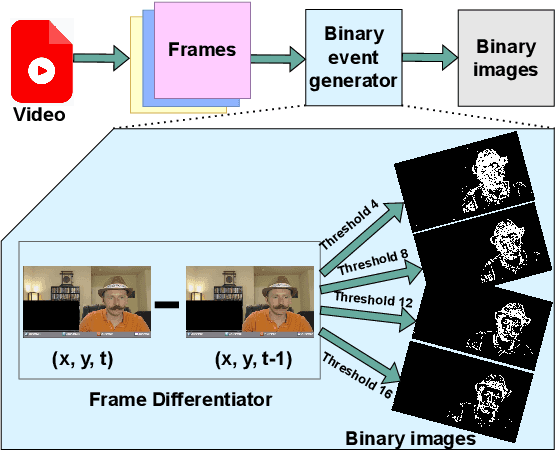

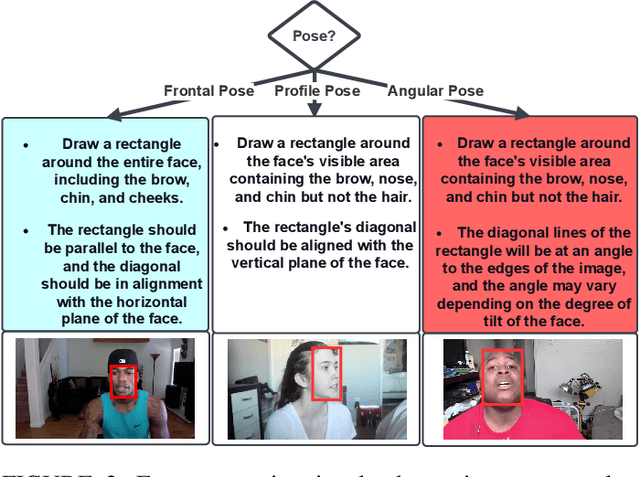

Abstract:Smart focal-plane and in-chip image processing has emerged as a crucial technology for vision-enabled embedded systems with energy efficiency and privacy. However, the lack of special datasets providing examples of the data that these neuromorphic sensors compute to convey visual information has hindered the adoption of these promising technologies. Neuromorphic imager variants, including event-based sensors, produce various representations such as streams of pixel addresses representing time and locations of intensity changes in the focal plane, temporal-difference data, data sifted/thresholded by temporal differences, image data after applying spatial transformations, optical flow data, and/or statistical representations. To address the critical barrier to entry, we provide an annotated, temporal-threshold-based vision dataset specifically designed for face detection tasks derived from the same videos used for Aff-Wild2. By offering multiple threshold levels (e.g., 4, 8, 12, and 16), this dataset allows for comprehensive evaluation and optimization of state-of-the-art neural architectures under varying conditions and settings compared to traditional methods. The accompanying tool flow for generating event data from raw videos further enhances accessibility and usability. We anticipate that this resource will significantly support the development of robust vision systems based on smart sensors that can process based on temporal-difference thresholds, enabling more accurate and efficient object detection and localization and ultimately promoting the broader adoption of low-power, neuromorphic imaging technologies. To support further research, we publicly released the dataset at \url{https://dx.doi.org/10.21227/bw2e-dj78}.
Estimating Buildings' Parameters over Time Including Prior Knowledge
Jan 09, 2019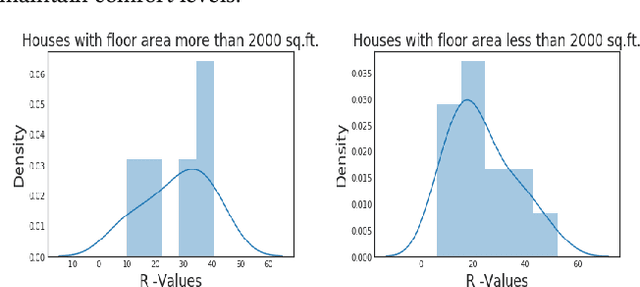
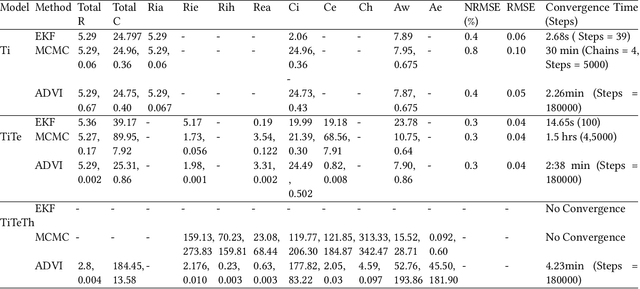
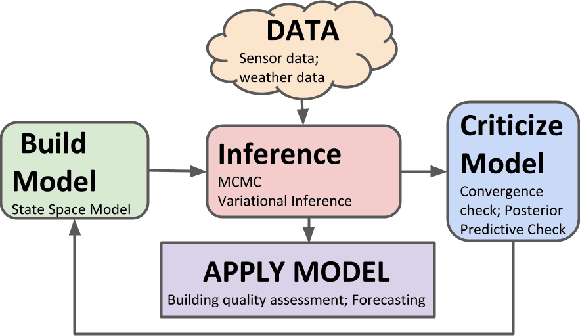

Abstract:Modeling buildings' heat dynamics is a complex process which depends on various factors including weather, building thermal capacity, insulation preservation, and residents' behavior. Gray-box models offer a causal inference of those dynamics expressed in few parameters specific to built environments. These parameters can provide compelling insights into the characteristics of building artifacts and have various applications such as forecasting HVAC usage, indoor temperature control monitoring of built environments, etc. In this paper, we present a systematic study of modeling buildings' thermal characteristics and thus derive the parameters of built conditions with a Bayesian approach. We build a Bayesian state-space model that can adapt and incorporate buildings' thermal equations and propose a generalized solution that can easily adapt prior knowledge regarding the parameters. We show that a faster approximate approach using variational inference for parameter estimation can provide similar parameters as that of a more time-consuming Markov Chain Monte Carlo (MCMC) approach. We perform extensive evaluations on two datasets to understand the generative process and show that the Bayesian approach is more interpretable. We further study the effects of prior selection for the model parameters and transfer learning, where we learn parameters from one season and use them to fit the model in the other. We perform extensive evaluations on controlled and real data traces to enumerate buildings' parameter within a 95% credible interval.
 Add to Chrome
Add to Chrome Add to Firefox
Add to Firefox Add to Edge
Add to Edge